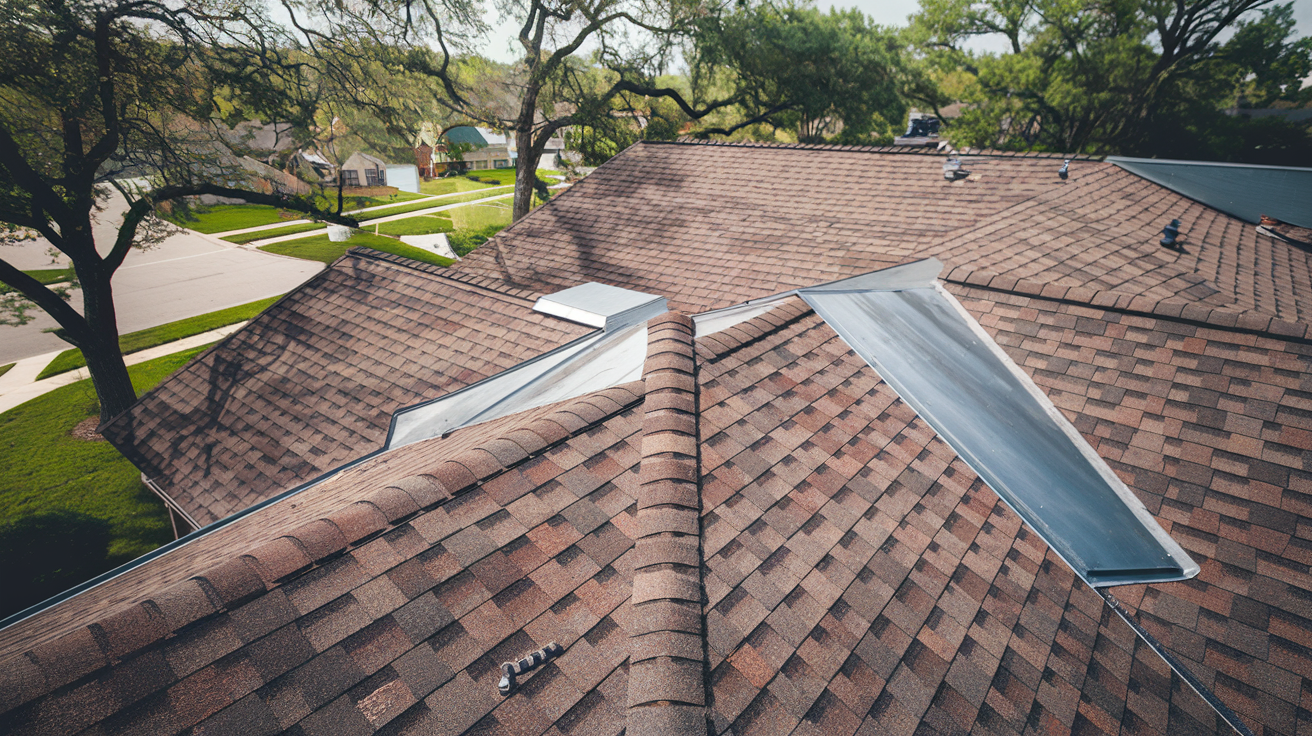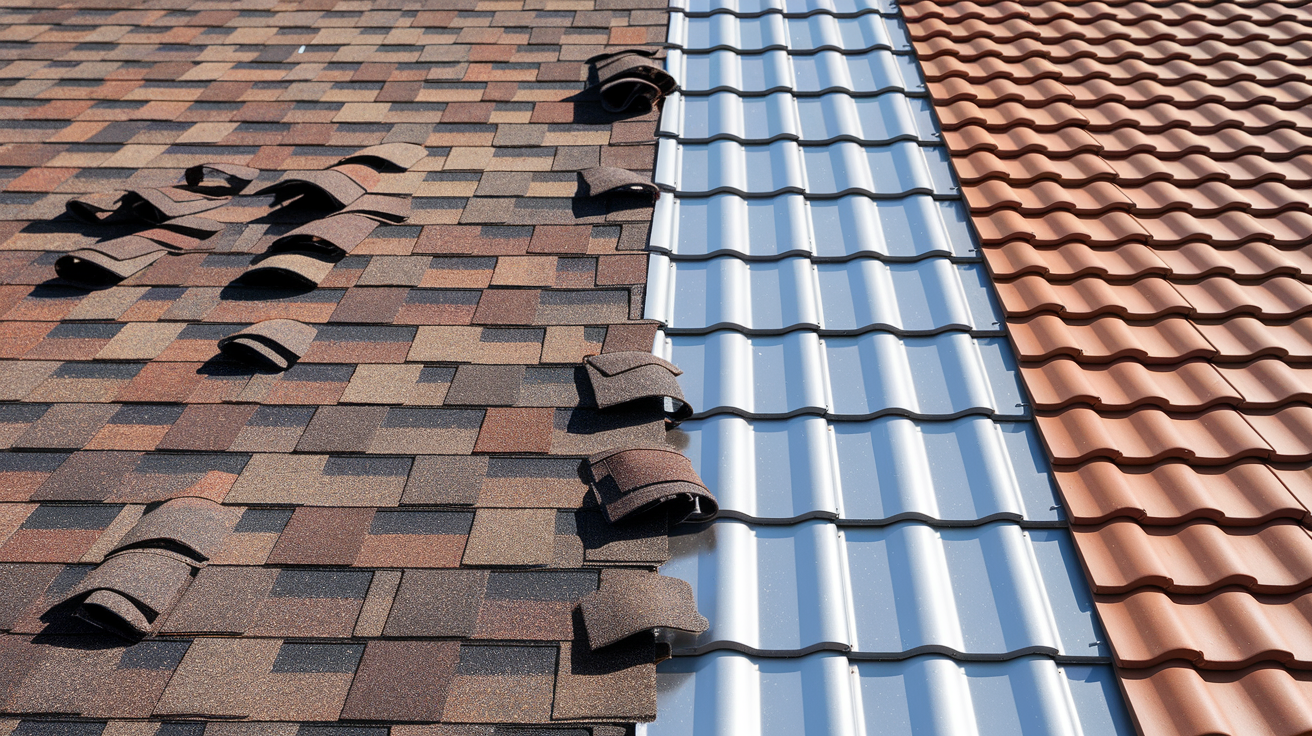Expert Guide: Chimney Flashing Repair & Maintenance Costs 2024
Every year, thousands of homeowners face costly repairs due to water damage from faulty chimney flashing. This critical roofing component, often overlooked until it fails, is your home's primary defense against water infiltration where your chimney meets the roof. Without proper maintenance, even minor flashing issues can lead to major structural damage, mold growth, and expensive repairs.
Understanding chimney flashing isn't just about preventing leaks – it's about protecting your entire home's integrity. A properly installed and maintained flashing system can last 20-30 years, while neglected flashing might fail in just a few years. With repair costs ranging from $300 to $800 for minor issues, and potential water damage repairs running into thousands, the stakes are high for homeowners.
In this comprehensive guide, you'll learn how to identify early warning signs of flashing problems, understand the best materials for your climate, and discover maintenance strategies that can save you thousands in repairs. Whether you're a new homeowner or maintaining an older property, this information will help you protect your investment and prevent costly water damage.
- Understanding Chimney Flashing
- The Role of Chimney Flashing in Roof Health
- Importance of Regular Maintenance
- Cost Implications and Preventative Measures
- Regional Considerations for Chimney Flashing
Understanding Chimney Flashing
Chimney flashing is crucial for a healthy roof as it prevents leaks and protects your home from water damage. It consists of metal sheets installed at the base of your chimney, where it meets the roof, to create a waterproof seal. This seal is essential; without it, water can seep into your roof and cause serious problems like rotted wood, damaged insulation, and even mold. Water can also damage the mortar joints of your chimney, leading to cracks and gaps between bricks. Regularly inspecting your chimney flashing can help you spot signs of damage early, like water stains, and prevent costly repairs. Consider scheduling a Get Your Roof Assessment to identify potential issues.
Benefits of Chimney Flashing
- Prevents water leaks
- Protects roof structure
- Prevents mold and rotting
- Extends roof lifespan
Signs of Flashing Issues
- Water stains on ceiling
- Visible rust or cracks
- Discoloration around chimney
- Musty odors in attic
What is Chimney Flashing?
Chimney flashing acts as a barrier against water entering where your chimney and roof connect. It directs water away from this intersection, preventing leaks and water damage. Flashing is typically installed in layers for maximum protection. This layered approach provides redundancy; even if one layer is damaged, the others can still prevent leaks. Damaged or missing shingles can cause roof leaks, and similarly, damaged flashing compromises your roof's protection. Proper installation and maintenance of chimney flashing are essential for extending the life of both your roof and chimney. This proactive approach helps avoid premature roof replacement and expensive chimney repairs. Learn more about roof maintenance to keep your roof in top condition. Eventually, flashing will need replacement due to wear and tear, even with regular maintenance.
Types of Chimney Flashing
Several types of chimney flashing exist, each with a specific job to protect your roof. The two main types are step flashing and counter flashing. Step flashing consists of small, overlapping L-shaped pieces installed under each shingle layer. It guides water down and away from the chimney. Counter flashing goes over the step flashing and is embedded into the chimney mortar. It covers the exposed edges of the step flashing for a more complete seal. Proper flashing around all roof penetrations, including vents, is crucial for preventing leaks.
Step Flashing
Overlapping L-shaped pieces directing water away from the chimney.
Counter Flashing
Embedded into the chimney mortar, covering step flashing edges.
Common Materials Used in Chimney Flashing
Different materials offer various benefits and drawbacks for chimney flashing:
- Aluminum: Common because it's lightweight and inexpensive, but not the most durable, especially in harsh climates.
- Lead: Known for its durability, especially in coastal environments.
- Copper: More expensive but offers excellent longevity and aesthetic appeal.
- Galvanized and Stainless Steel: Other options depending on climate and budget.
The right material depends on your budget, climate, and preferences. High-quality materials extend the life of your flashing, which generally lasts 20-30 years. However, flashing can last anywhere from 15-50 years depending on the material and local weather. Look for signs of damage like rust, cracks, leaks, or moisture near the chimney base. If you spot these, schedule an inspection. Older roofs are more prone to damage and leaks, making regular inspections even more important. Any sign of water or moisture inside your home near the chimney indicates potential damage and requires immediate attention.
The Role of Chimney Flashing in Roof Health
Chimney flashing is vital for a healthy roof. It prevents water damage by acting as a waterproof barrier. This metal sheeting, installed at the base of your chimney, seals the gap where the chimney meets the roof. Well-maintained flashing protects your roof and extends the life of your chimney by preventing water damage. Understanding chimney flashing helps homeowners keep their roofs leak-free and in top shape. Consider getting a roof assessment to ensure your chimney flashing is properly installed.
How Chimney Flashing Protects the Roof
Chimney flashing is your roof's first defense against water. It seals the connection between the chimney and roof, stopping leaks before they start. This is especially important during heavy rain or snow. The flashing channels water away from the chimney-roof seam, preventing it from seeping inside. Proper flashing installation and maintenance are crucial for protecting your roof. High-quality flashing materials, like stainless steel or copper, offer better rust and corrosion resistance. Learn more about roof maintenance to understand how proper flashing contributes to a longer-lasting roof.

Common Issues with Faulty Chimney Flashing
Damaged flashing can cause roof problems. Rust, cracks, or missing pieces create openings for water to enter. These problems often come from age, weather, or poor installation. Incorrectly installed flashing can leave gaps, letting water in. Look for water stains or discoloration on your chimney or roof. These are early signs of flashing problems. Rust streaks, moisture, or wet spots around your chimney's base are also warning signs. Ignoring these problems can lead to serious damage, like wood rot and decay. Water can also damage the chimney's mortar joints. Regular roof inspections and quick repairs are essential. Repairs usually cost between $300 and $800.
Consequences of Unaddressed Chimney Leaks
Ignoring chimney leaks can seriously damage your home. Water entering through bad flashing weakens roof supports and mortar joints. Water stains and damp patches can appear inside near the chimney. This can lead to expensive repairs or even a new roof. A small leak can quickly turn into a huge problem. Moisture also causes mold, a health hazard. Mold can trigger breathing problems and allergies. A musty smell is another sign of mold. Addressing flashing problems early prevents these issues. Chimney flashing usually lasts 20-30 years, so regular checks are important.
Consequences of Ignoring Chimney Leaks
- Weakens roof supports
- Causes mold and health hazards
- Results in costly repairs
- Leads to structural damage
Importance of Regular Maintenance
Regular chimney flashing maintenance is crucial for a healthy roof and leak prevention. Neglecting this vital component can lead to costly repairs and extensive home damage. Chimney flashing, the metal that seals the gap between your chimney and roof, acts as the first line of defense against water. Without regular upkeep, small issues can become big problems, impacting your roof's structure and your home's stability. For example, a minor leak could cause rot in your roof and even spread to interior walls, leading to major repairs. Consider scheduling a roof assessment to proactively identify potential issues.
Key Warning Signs of Chimney Flashing Deterioration
Early detection of chimney flashing problems can prevent expensive repairs, often costing between $300 and $800. A key sign is water stains or dampness on walls or ceilings near the chimney. Look for brown discoloration or wet spots, especially after rain. This suggests water is entering your home, potentially damaging insulation and drywall.
Other Warning Signs
- Rust, cracks, or missing flashing pieces
- Visible water or dampness in the chimney area
- Unusual odors around the chimney
- Deteriorating mortar joints (gaps between chimney bricks)
- Broken masonry inside the firebox
These signs warrant immediate professional attention to prevent further damage, such as mold or structural issues. Learn more about roof maintenance to understand how professionals can help.
The Benefits of Regular Inspections
Regular chimney flashing inspections offer numerous benefits, like extending roof lifespan and maintaining structural integrity. By addressing minor problems early, homeowners avoid costly repairs and water damage. For instance, a small crack in the flashing, if caught early, can prevent a much larger, more expensive leak later. Regular maintenance also ensures the flashing effectively seals out moisture, preventing leaks that can lead to mold or structural damage. Even without visible damage, regular inspections are crucial. They can reveal hidden issues like small cracks or loose nails, easily fixed before they become major problems. Professional inspections provide peace of mind, knowing your roof is protected. While flashing typically lasts 20-30 years, annual inspections are recommended, especially in harsh climates, to catch potential problems early.
DIY vs. Professional Maintenance: Pros and Cons
Homeowners often consider DIY versus professional chimney flashing maintenance. DIY can be cost-effective for minor tasks like resealing small cracks. However, it requires skill and roofing knowledge to avoid causing further damage. For complex repairs, or if you're unsure, consult a professional. Improper repairs can worsen leaks. Professional maintenance offers expertise and thoroughness, addressing all potential issues. While initially more expensive, it can save money long-term by preventing major repairs and extending roof life. Investing in high-quality flashing and counter flashing also increases roof and chimney longevity, meaning choosing durable materials built to last.
DIY Maintenance
- Cost-effective
- Requires skill
- Risk of improper repairs
Professional Maintenance
- Expertise and thoroughness
- Addresses all issues
- Higher initial cost
Cost Implications and Preventative Measures
Maintaining your chimney flashing is crucial for both the health of your roof and your wallet. Neglecting damaged flashing can result in expensive repairs and even structural problems. Understanding the costs involved and taking preventative steps can save you a lot of money down the road. By investing in quality materials and regular checks, you can extend the life of your chimney flashing and prevent leaks that could damage your home.
Cost of Repairs and Replacement
Chimney flashing repair costs can vary greatly. They typically range from $300 to $800, depending on the damage and the materials used. This cost is relatively small compared to the potential expense of major water damage or structural repairs from ignored flashing problems. If water damage reaches your interior walls or ceilings, repair costs can increase significantly. Replacement costs can be even higher, especially if the flashing is part of a larger roof repair. A full chimney rebuild due to water damage could cost thousands of dollars. Regular upkeep and timely repairs can help you avoid these major expenses by ensuring small issues don't become big problems. For a professional assessment of your roof, consider our Get Your Roof Assessment.
Preventing Leaks through Effective Chimney Flashing
The best way to handle chimney flashing and roof leaks is prevention. Effective flashing creates a barrier, stopping water from seeping into your roof and causing damage. Flashing overlaps the shingles and chimney, forming a waterproof seal that directs water away from this critical junction. This overlapping design keeps water out of the vulnerable areas where the chimney meets the roof. Regular inspections, ideally yearly or after severe weather, can help you find early signs of damage like rust, cracks, or loose flashing. If you ignore these signs, they can lead to leaks. Look for discoloration or water stains on the chimney or surrounding roof, both inside and outside your home. These are key indicators of potential leaks. Other signs include damp patches on walls or ceilings near the chimney, moisture or wet patches around the chimney's base, or even broken masonry inside the firebox, which could mean a damaged chimney liner letting in water. Water and moisture inside are also common signs of chimney damage. Addressing these signs early can prevent major damage and protect your roof. Learn more about roof maintenance to keep your roof in top condition.
Choosing Durable Materials for Long-Term Savings
Using durable materials for your chimney flashing can save you money over time. Aluminum is a common choice because it's lightweight and inexpensive. However, it typically lasts only 15 to 20 years and is not the most durable option, especially in coastal areas with salty air. Copper, while more expensive upfront, is known for its longevity and can last much longer, often 50 years or more. Lead flashing is another durable option that performs well in coastal climates. Choosing high-quality materials can reduce the need for frequent repairs and replacements, saving you money in the long run. More expensive materials aren't always the best choice. The ideal material depends on your budget, local climate, and roof type. By carefully selecting materials appropriate for your climate and roof, you can maximize the lifespan of your chimney flashing and protect your home effectively.

Regional Considerations for Chimney Flashing
Understanding regional considerations for chimney flashing is crucial for a long-lasting and effective roof. Climate and local building practices significantly impact how long chimney flashing lasts and how well it works. By adapting to these regional factors, you can better protect your home from leaks and structural damage.
Climate Impact on Flashing Material Longevity
Climate plays a key role in how long flashing materials last. Chimney flashing creates a waterproof seal around your chimney. It's constantly exposed to weather. Extreme weather, like heavy snow or high humidity, can wear down flashing faster. For example, aluminum flashing typically lasts 15-20 years, but harsh climates can shorten its lifespan unless you take extra steps, like using compatible materials from the beginning. Compatible materials mean using sealants and fasteners designed to work together and withstand the specific climate. Lead flashing is known for its durability in coastal climates because it resists salty air. Chimney flashing, in general, can last anywhere from 15-50 years depending on the conditions and material quality. Severe weather can shorten this range. Understanding these climate challenges helps homeowners choose materials that will last, saving money on repairs, which can cost $300-$800 for leaky flashing. Investing in high-quality flashing and counter flashing protects your roof and chimney. Get Your Roof Assessment to ensure your flashing is appropriate for your climate.
Choosing the Right Flashing Material
Choosing the right flashing material for your region is crucial for preventing leaks and maximizing the lifespan of your roof. For coastal regions with high salt exposure, lead flashing is often preferred for its corrosion resistance. However, in areas with extreme temperature fluctuations, more flexible materials may be necessary to prevent cracking. Learn more about roof maintenance and the role of flashing in protecting your home.
Regional Installation Adaptations for Optimal Performance
Adapting flashing installation to your region improves its effectiveness. In rainy areas, extra sealing prevents water damage. This might include special sealants or extra layers of protection. Heavy rain can overwhelm standard flashing. In areas with freezing and thawing, secure flashing and flexible joints are important. This helps the flashing expand and contract without cracking. Rigid flashing can crack in these climates. Properly installed flashing keeps water from seeping into your roof. This prevents rot, mold, and structural damage. Local building codes may also require specific installation methods for high winds or earthquakes. Following these codes ensures your chimney and flashing are structurally sound. Regular inspections help ensure your flashing lasts. A professional inspection every few years and a yearly visual check, especially after storms, are recommended. Look for rust, cracks, or loose sections.

Disclaimer: This blog post is intended for informational purposes only and should not be considered professional roofing advice. Always consult with qualified roofing contractors and insurance professionals for specific guidance regarding your individual circumstances.
